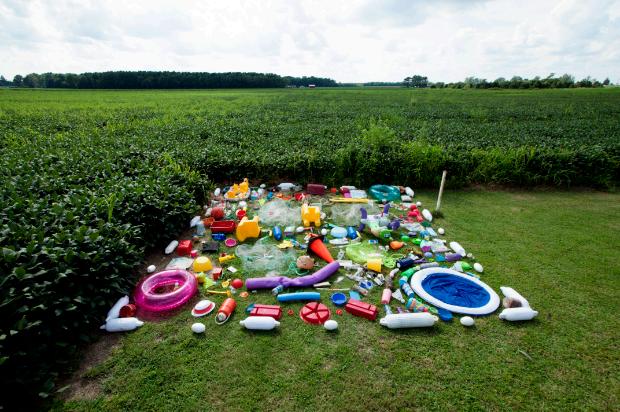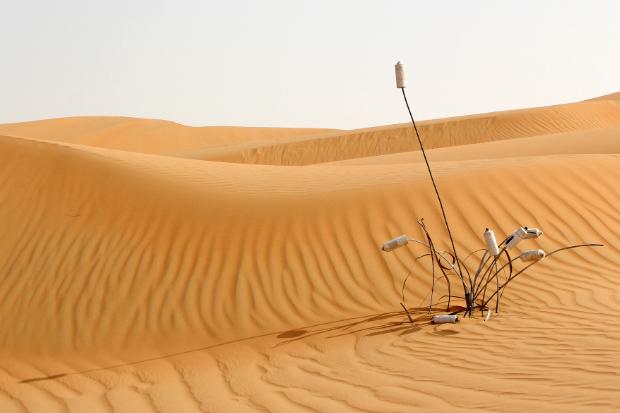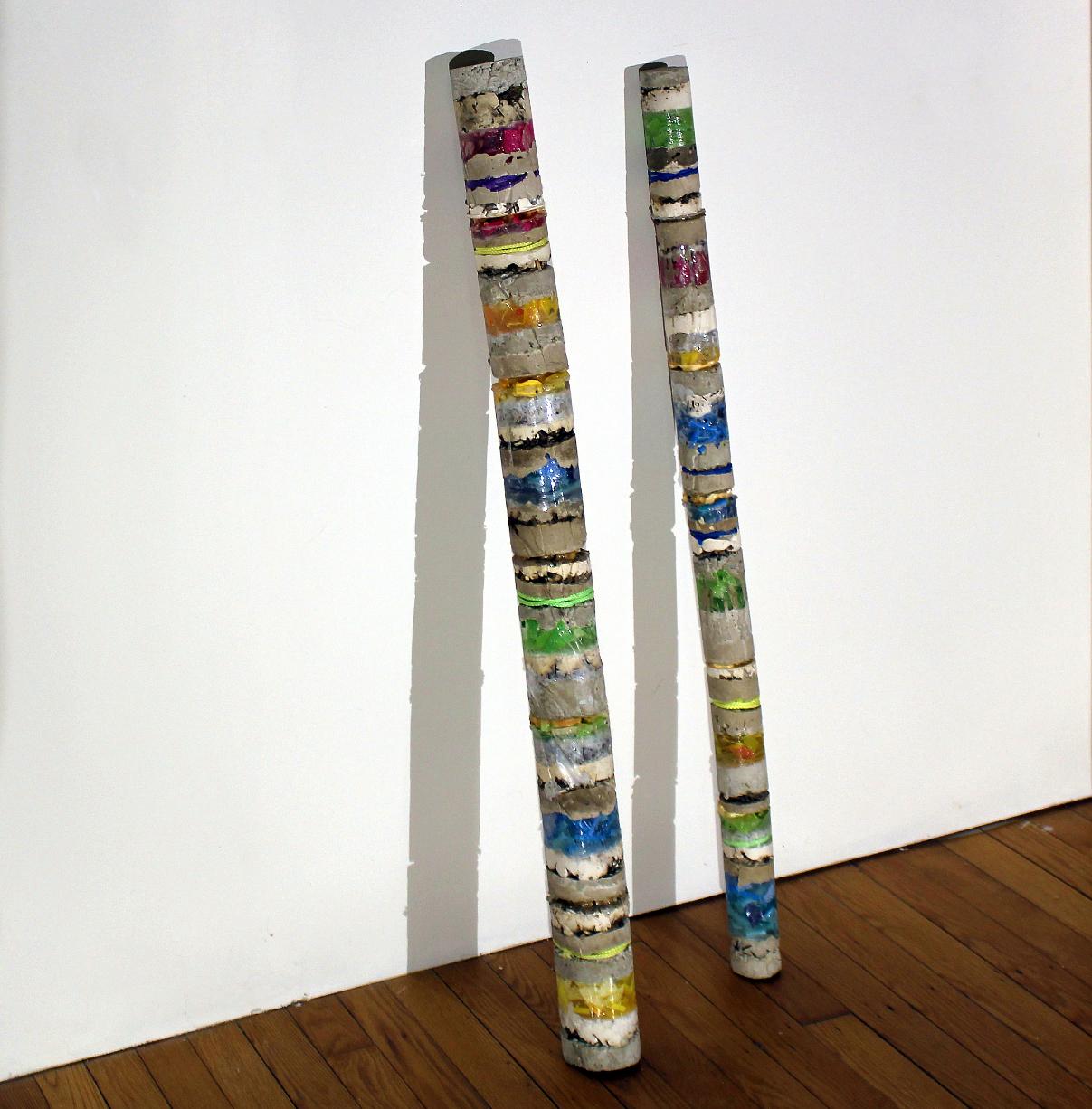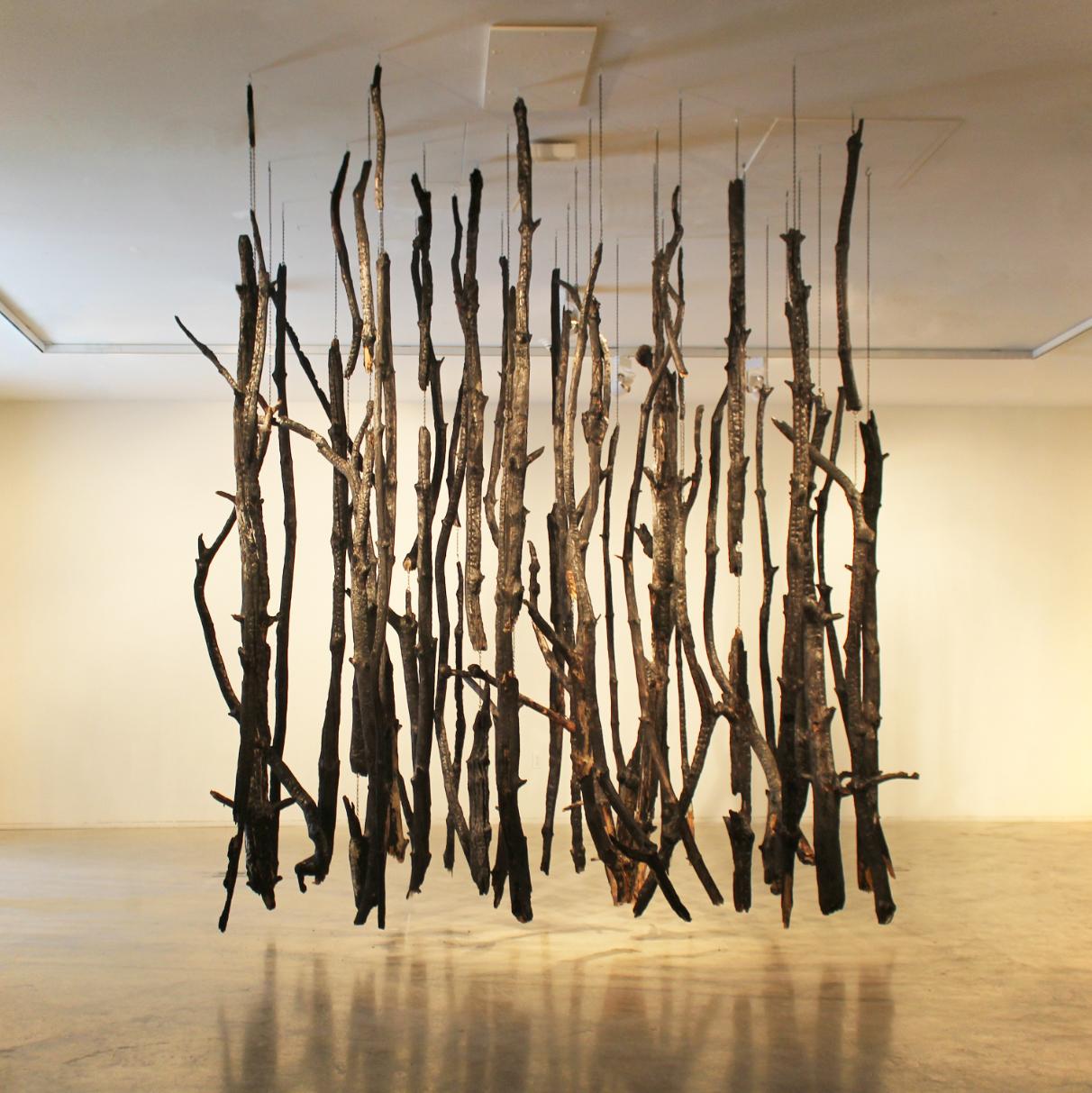
10 minute read
Are we the weed or the wildflower?” by Madelaine Corbin
from Seasonal Adjustments
by jeffschof
36
ARE WE THE WEED OR THE WILDFLOWER?
Advertisement
by Madelaine Corbin
Superscript numbers designate footnotes. Roman numerals designate endnotes.
ARTIST JEFF SCHOFIELD OFFERS inter- and intraworld relations throughout his solo exhibition, “Seasonal Adjustments.” As humans are welcomed to navigate the communal constellation in the immediate time of our bodies1 (versus the slow time of planets), Schofield gifts us the opportunity to experience a place where life has happened, is happening, and will continue to happen. i In this space, artworks are suspended in time.2 The objects and event-memories are halted in their decay for the fleeting moment of this exhibition, poised between Earth Day and World Environment Day. The consequences of time are amplified with the reminder of the other between—the one that follows World Environment Day and precedes the next Earth Day. “Seasonal Adjustments” sits in one interstice before the next in a constant cycling of time, attention, and interaction.
Schofield’s event-based, site-specific, and found object art installations are multiscalar compositions. Each piece is first a world of its own. Artistic collections of individual units coalesce into organisms, memories, and speculations that interact with one another in a singular space—an organism with a speculation, a memory with an organism, a speculation with a memory. The compositions then pull viewers into different spaces and relations while pushing outward to the natural world beyond the gallery walls: planks of barn wood exist here and also out there, a weed lit by a bulb is suspended inside and also grows under
1. Ken Chen writes that the navigation of a space in time with our bodies (rather than emitting brain pulses into the dematerialized zone of the imagination) is where we act and react spontaneously. These experiences lacking performativity and instead welcoming spontaneity are where life happens, Chen says. 2. A selection of the artworks is also suspended literally in place. 3. The earth leaves flowers on its own graves. Unlike those that humans often leave, these flowers are not cut but instead continue the processes of blooming, seeding, sprouting, and evolving. 4. This count of litter is not linear but logarithmic (101, 103, 109) and synonymous with the climate catastrophe which progresses in effects tenfold with the realization of each disaster preceding the next. It is also the inverse of an exponent (which is how a footnote is visually written).
the sun outside, the burnt limbs of trees hang from a ceiling and also rest upon the earth where fireweed now blooms.3 Commemorations of events and speculations about inter species identities are on display as Schofield ruefully explores what it means to affect and be affected by our metastasizing ecological catastrophes.ii The work’s mission suggests a blurring of boundaries between worlds. Their interactions—our interactions—are vital.
Schofield’s works act as descriptions of climate change and anthoropocentric (in)action. His ‘descriptions’ (versus hypotheses) are rooted in past events: the climate retaliated, devastation occurred, remnants were collected and organized. While this process of describing initially appears linear and in the past tense, the results offer unexpected and exponential ideas. The mathematics of Schofield’s work articulate a darkness to the perception of accretion. One piece of sunfaded plastic plus one weed encased in resin does not equal a total of two. Instead, the results of human intrusions upon the earth equal infinite, cascading results. Singularly, a piece of shiny blue plastic on the beach is not frightening. What that one piece means, however, when tens, thousands, billions4 of littered plastic pieces accumulate is a monstrous accretion not easily halted. What Schofield offers is the isolation of each unit, specimen, or cell. The cells of his works grow, evolve, and become together. Schofield offers a
37
38
community of communities to be wandered and wondered. In The Hidden Life of Trees, Peter Wohlleben writes,
A tree is not a forest. On its own, a tree cannot establish a consistent local climate. It is at the mercy of the wind and weather. But together, many trees create an ecosystem that moderates the extremes of heat and cold, stores a great deal of water, and generates a great deal of humidity. And in this environment, trees can live to be very old. To get to this point, the community must remain intact no matter what.iii
Repetition amplifies the conversations across the exhibition. In Weeds and Wildflowers, a suspended meadow of plant specimens is paused between overtaking or succumbing to one another. The space between a weed and wildflower is charged.5 A plant is deemed an invasive species when its “introduction causes or is likely to cause economic or environmental harm or harm to human health [emphasis added]” as defined by the National Invasive Species Information Center.iv The introduction of native and non-native species to one another is most often catalyzed by humans. There are many repercussions6 for bringing species to new locations where they will invariably evolve, mutate, grow, or die on drastic scales. Extensive research, funding, and energy is expended to manage ecological relationships. Weeds and Wildflowers highlights more than the relationship between the plant types. The third participant in this story is the human viewer. In an inversion7 of the invasive species definition, what might a weed consider a human? Who is invasive to whom? Of course, humans exist within a varied and complex category. We participate in different yet interconnected histories, cultures, and ancestral pasts. The goal is not to reduce humans to the greatest offenders of atrocities against the natural world, but to offer space for individuals to ask, “what might a weed think of me?” There are likely many cases in which a weed and human may be allies, collaborators, mentors, students, and caretakers as both can attend to one another. Equally, humans may at times be invaders, colonizers, and oppressors.
Schofield’s installations supply plants, objects, and happenings from far apart geographies to be navigated together in his immersive exhibition. Installation artwork is critically dependent upon a philosophy of space. In 1967, Michel Foucault delivered a lecture titled, “Des Espaces Autres,” or “Of Other Spaces,” that dis-
5. In this iteration, the plants appear to share several similarities: their colors, body parts, and a helplessness while encased in resin for the viewing pleasure of humans. However, the differences between the plants are also highlighted. Schofield writes about the “white-noise-in-green” effect that the natural world often elicits when plants aren’t noticed as individuals. 6. This blind date of sorts does not allow species to meet one another in their own time. Instead of pacing these interactions to match that of evolution or tectonic shifts, these relations are mobilized at the unreasonable speed of freighters, petroleum, and human desire. Subject to Flooding, collaboration with Ashley Beatty “A tree is not a forest.”

7. From human-to-weed to weed-to-human is not a reversal meant to simply indicate a change in direction. Instead, it is an inversion that suggests a shapeshifting and a shared identity for a split second.

Synthetic Harvest, collaboration with Ashley Beatty “heterotopian garden” sected a new network of in-between-space: the heterotopia. Heterotopias are meta worlds within worlds.v According to Foucault, a heterotopia is an incongruous space that acts as an alternative to utopia or dystopia.vi In the heterotopic garden of Schofield’s exhibition, collections of contradictions interact with one another, materials like plastic break with our concepts of time, and each piece encourages a reach outward from gallery to natural world.
Tapping into the heterotopia is one step toward revisioning how we see ourselves. The concept still preferences individual units as separate entities. These unique nodes that hold the network taught are complicated by emerging ideas that differentiate less and less between bodies.vii What is suggested instead is an umwelt, 8 or a constant streaming between an organism and its experienced world in a “process of perpetual cocreation and mutual generation,”viii such that the very streaming is the organism. Additionally, organisms and their environments are physically made of one another. As Timothy Morton writes,

Nurse Log “Entities are mutually determining”
Evolution means that life forms are made of other life forms.9 Entities are mutually determining:10 [emphasis added] they exist in relation to each other and derive from each other. Nothing exists independently, and nothing comes from nothing.ix
If we are composed of coursing relations and materialities, and our environments are composed of the same, then perhaps the formal nodes don’t exist at all. And we, as individuals, do not exist at all. Instead, the messy, abstruse, swarming space of our relations is exactly where our nodeless, more-than-human identity thrives—the umwelt-topia.x
The umwelt-topia builds upon the previous perspectives of mutual or inter-determining into a realm of animistic, intra-determining. 11 The significance of the umwelt-topia is to stop seeing things as other. Ursula K. LeGuin writes,
One way to stop seeing trees, or rivers, or hills, only as “natural resources,” is to class them as fellow beings—kinfolk . . . I guess I’m trying to
8. Biosemiotician Jakob von Uexküll developed the idea that those aspects of an organism’s environment that the organism responds or reacts to is called the umwelt. 9. This idea of mutual determination reaches beyond the bounds of life form inter-determining into a realm of animistic intra-determining. 10. “-ing” is notable here and indicates an ongoing process as one that is always constructing. 11. This intra-determining is occurring both between our bodies and within our body (our shared body of everything everywhere) simultaneously.
39
40
subjectify the universe, because look where objectifying it has gotten us. To subjectify is not necessarily to co-opt, colonize, exploit. Rather it may involve a great reach outward of the mind and imagination.xi
Swelling opportunities for exploitation are desiccated when we recognize ourselves as one complicated entity, one vital materiality.12 xii
Between streets and sidewalks, parks and riverbanks, beaches and mountain trails, the incompatible materials coalesced by Schofield exist as the worlds we compose and that compose us. In this umwelt-topia, we are the weed and the wildflower. We are the plastic and the ocean waves, the tree trunks and the fire that burnt them, the barn siding and the fungal growth, the barn rafters and the billowing wind. We are the “and” that sits before, between, and after each element. Schofield’s work may first describe events, objects, and sites, but inevitably his installations also ask us questions about the world we want to see when we leave the gallery. One answer might be found by incorporating his artistic process into our daily lives: first to notice and collect,13 next to listen to and be astonished by the unexpected born from accumulation, and finally to be affected and share the story.14 After all, we are already sharing this one, ontogenic becoming.
Detroit, April 2021
12. Reference to Vibrant Matter: A Political Ecology of Things by Jane Bennett. The full quote reads: “A lot happens to the concept of agency once nonhuman things are figured less as social constructions and more as actors, and once humans themselves are assessed not as autonoms but as vital materialities.” 13. Collect observations, objects, ideas, and all types of physical and non-physical happenings. 14. Share the effects both within our own lives, habits, and interactions with the natural world and also share the effects with other humans participating with and inhabiting in the natural world. Metal Bouquet “subjectify the universe”

i. Paper Monument, ed. As Radical, As Mother, As Salad, As Shelter: What Should Art Institutions Do Now? Brooklyn, NY: Paper Monument, 2018. ii. Fuller, Mattew and Olga Goriunova. Bleak Joys: Aesthetics of Ecology & Impossibility. Minneapolis, MN: University of Minnesota Press, 2019. iii. Wohlleben, Peter. The Hidden Life of Trees: What They Feel, How They Communicate―Discoveries from A Secret World (The Mysteries of Nature (1)). Vancouver, Canada: Greystone Books, 2016. iv. “Executive Order 13112. Definitions,” USDA, National Invasive Species Information Center. https://www.invasive speciesinfo.gov/executive-order-13112-section-1-definitions. v. Foucault, Michel. “Of Other Spaces: Utopias and Heterotopias—1967.” Translated from the French by Jay Miskowiec. Architecture /Mouvement/ Continuite, 1984. vi. Ibid. vii. Chaudhuri, Una. “Queering the Green Man, Reframing the Garden: Marina Zurkow’s Mesocosm (Northumberland UK) and the Theatre of Species.” http://www.scapegoatjournal .org/docs/02/02_Chaudhuri_QueeringTheGreen.pdf viii. Ibid. ix. Morton, Timothy. “Guest Column: Queer Ecology.” PMLA 125, No. 2 (March 2010): 273–282. x. Corbin, Madelaine. The Stuff of Everyday Magic. Detroit, MI: Blurb, 2020. xi. LeGuin, Ursula K. “Deep in Admiration.” Lecture from “Anthropocene: Arts of Living on a Damaged Planet” at the University of California, Santa Cruz, CA. 2014. xii. Bennett, Jane. Vibrant Matter: A Political Ecology of Things. Durham, NC: Duke University Press, 2010.






